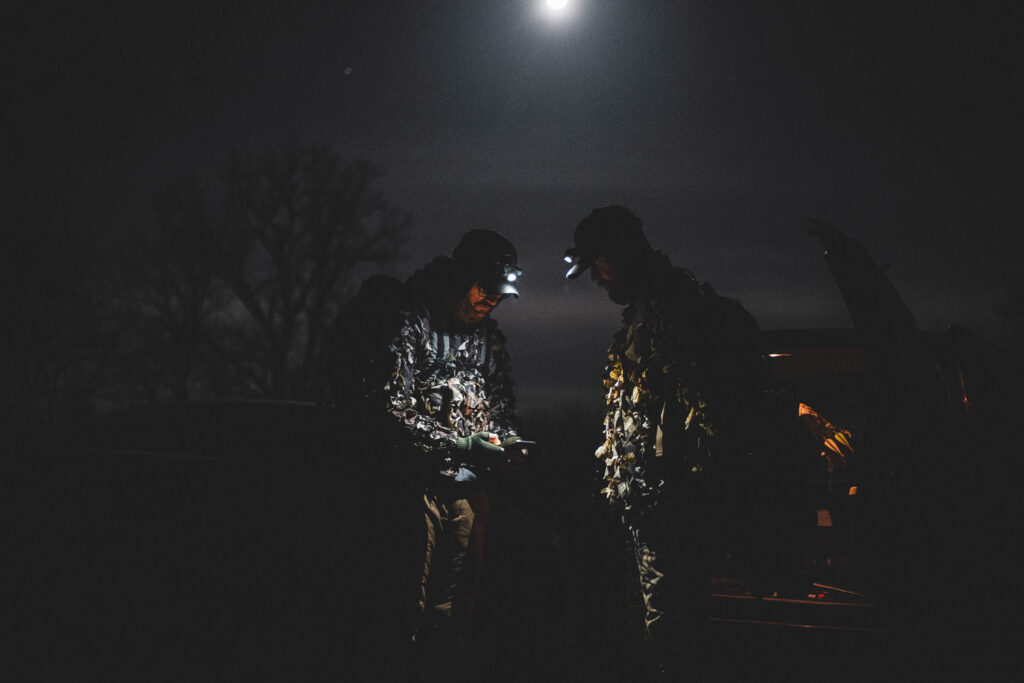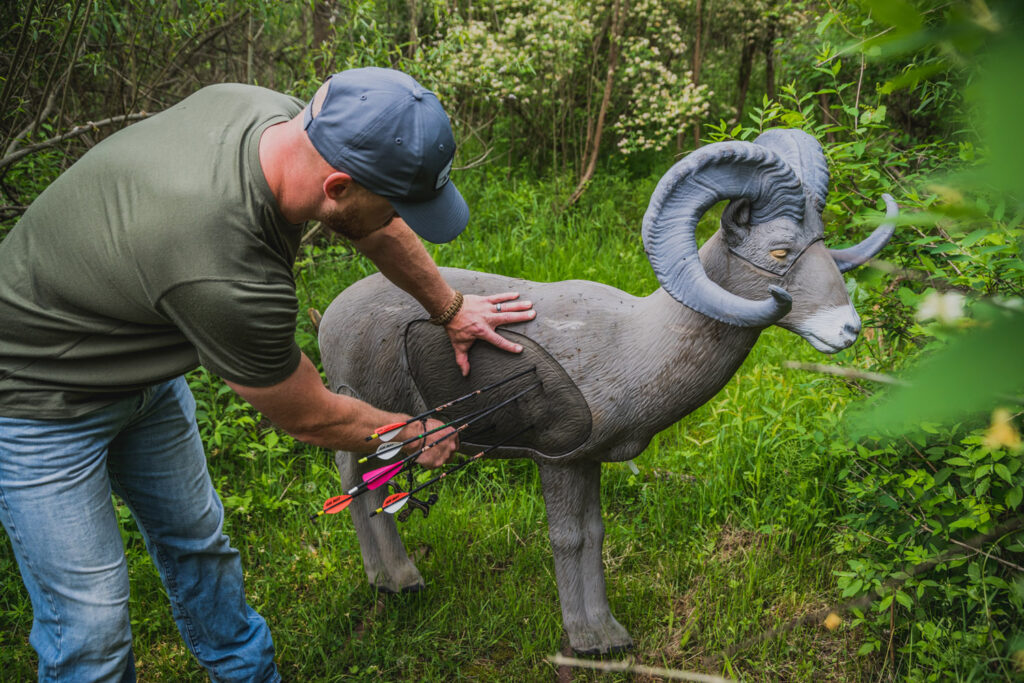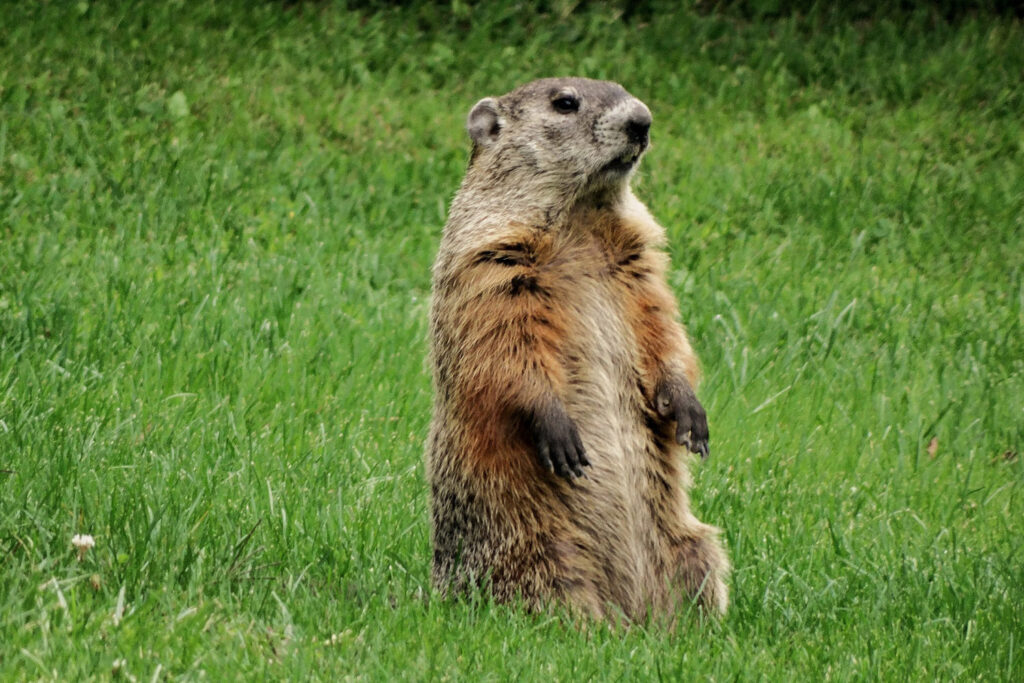I’ve hunted turkey for over a decade. What started as an excuse to spend time in the woods during the spring has evolved into an obsession. The call and response, the allure of the decoys, and the heart-pounding excitement add up to an intoxicating experience. A song and dance that has been around for millennia.
Turkey hunting begins, like most hunts, well before the sun rises. A proper turkey hunt actually starts the night before. Right after dark, you’ll find true turkey hunters quietly sneaking into the woods to “put the birds to bed.” The goal is to locate where the turkeys are roosting for the night so you can get close to where they’ll fly down during the morning hunt. The most primal way to locate sleepy toms (male turkeys) is to use two distinct bird calls as you move through the woods, which you can make with only the tools God gave you at birth. One is the barred owl’s call – if you say, “Who cooks for you? Who cooks for you all?” out loud in a falsetto voice, you’ll get a sense of what it sounds like.
The other call, that of a screech owl, pretty much lives up to its name. Turkeys seem to be locked into some eternal feud with owls and can’t resist gobbling back in an angry response. These gobbles are what turkey hunters dream about all year. If the elusive pure strike of a golf ball is what brings an amateur golfer back to the links over and over again, a thunderous gobble is what does it for turkey fanatics. It is addictive.
Early the next morning, I load up on caffeine and start the slow, deliberate walk back to where I’d tucked the birds in the night before. Turkeys have incredible eyesight and easily pick out movement and patterns that are out of place. The approach will have to be perfect.
Once I’ve slipped in close enough, I find a spot to set up and wait for the fly-down. It’s got to be a place that conceals the human form but also allows for open shooting lanes. I brush in and wait for streams of light to start to trickle into the early spring canopy.

As the Michigan woods begin to wake up, I let out a soft purring hen call (a small diaphragm that fits into the roof of my mouth and vibrates as air passes over it) into the blue morning air and listen. Toms and hens will often roost near each other. I’m hoping to convince this tom that I’m an amorous hen that’s just starting to wake up in an adjacent tree. Like clockwork, the forest erupts in thunderous gobbles. One tom gobbling elicits a response from another a few hundred yards deeper into the woods. And then another. And another. I sit shivering with a smile on my face, knowing that the game is afoot.
Soon I hear the flapping of great wings and watch what appears to be a mix of flying and falling. The birds have left the nest. If you’ve ever seen a wild turkey, you will immediately understand why Benjamin Franklin wanted it as our national bird. Turkeys are a spectacle unto themselves, flaunting huge tail fathers and long black beards from the middle of their puffed-up chests. Sometimes it’s hard to believe so much bravado can fit into one animal.
Turkey hunting is a close-range sport. Once they’ve flown down, the idea is to lure them into your bubble – the area in which your personal skill allows you to be most lethal. Because turkeys are visually-driven creatures, the most effective way to get them to close the distance is by using decoys. Early turkey hunters used actual turkey feathers on carved pieces of wood. I’ve settled for a blow-up, plastic (but ultra-realistic) option.
For this hunt, I’ve chosen a hen and jake (adolescent male turkey) pair. Ideally, a lonely tom will see the scene I’ve laid out and assume a younger, weaker challenger has tried to pick off a member of his soon-to-be harem. To add to the realism, I sound off with a few soft clucks and squeaky yelps from my mouth call, mimicking the sound a hen might make when pestered by an inferior male. The gobbler snaps his head in my direction and immediately inflates. The dance has begun.
Along with the tom’s gobble, you can almost half-hear/half-feel the bass boom of his chest filling up with air. It happens in an instant. His tail feathers are pointed to the sky and his head has changed from a snow-white color to a dark red. He’s coming in to kick someone’s ass. Anytime he hesitates, I let out a series of soft purrs and excited clucks to reclaim his attention. The minutes pass by at an excruciating pace as my heart begins to feel like it’ll beat out of my chest. I need him to come close enough for me to make an ethical shot with my archery equipment.
The tom is finally in my bubble. I wait for him to move behind a tree and draw my bow. As soon as he steps out, it’ll be over. It’s primal, it’s challenging, and it’s so rewarding.

Turkey hunting, like most hunting, is paradoxical and harmonic. Hunters are often the most passionate about the animals they pursue, yet the goal is still the kill.
Turkey hunting, like most hunting, is paradoxical and harmonic. Hunters are often the most passionate about the animals they pursue, yet the goal is still the kill. The love for turkeys is what drives them to seek to harvest a bird, which in the long-term is good for the wider turkey population. Hunters are both a participant and a protector; a microcosm of what harmony with the natural world, in some ways, should look like. Michigan’s wild turkeys, once on the brink of extinction, now symbolize a conservation triumph that echoes throughout the state.
In the spring, the woods come alive. Birds have returned north from their winter vacations, deer fawns can be seen following their mothers, and morels have begun to pop up all over the forest floor. The hunt itself is a dance of patience and skill. It’s an active pursuit that involves striking up a thunderous gobble from a nearby tom and luring it in with hen calls. What may seem like a simple hunt usually takes hours and often results in the hunter walking away empty-handed.
Not this time, though. I’ll save the tail feathers, feet, and beard as a trophy and feed the breasts and legs to family and friends. Sharing the bounty brings to mind the traditions and rhythms of Michigan’s amazing outdoors.

At the dinner table, the fruits of the hunt meld with the stories of the morning’s dance – the close calls, the mistakes, and the triumphs. It’s a communal act where the line between hunter and nature blurs. The harmony that rings through Michigan’s woods finds a second life in our homes, echoing through laughter and conversation.
Turkey hunting isn’t just about the chase. It’s about the connection. It’s a reminder of our place in the natural world. It reminds us of our responsibility to be both predator and protector. It’s an intricate balance, like a well-performed duet.
Tim Dawson is an experienced outdoorsman with a passion for the Mitten State. Follow him on X @TheFairChase1.




